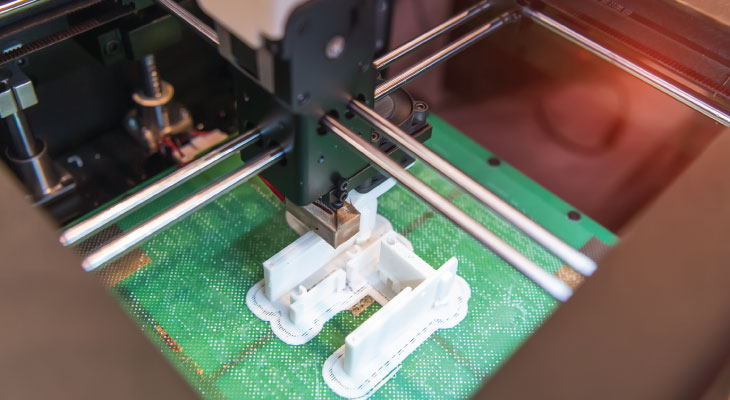How Are Lead Screws Used in a 3D Printer?

Rapid Prototyping 3D Multi-Material Printers
For many of today's manufacturing organizations, 3D printers have become a fixture for the rapid prototyping of parts and products before full-scale manufacture. With a 3D printer, product developers can quickly and cost-effectively create actual physical parts of product designs directly from product design data. Like a desktop printer produces type on a 2D page, a 3D printer builds a physical object in 3D space, layer by layer. The majority of 3D prints are used for design interrogation and evaluation purposes. Some parts produced on a 3D printer are production-ready. Still, others serve as the basis for creating molds for investment castings.
The benefit of using a 3D printer to rapidly prototype parts versus the historical practice of machining prototypes as preview parts is that it's faster and less expensive. However, not all 3D printers are created equal. This article will examine the advantages of using precision-engineered lead screws for driving linear motion control applications in 3D printing systems.
Lead Screws Outperform Belt Drives in 3D Printers
Many of the 3D printers on the market today utilize belt-drive technology, resulting in inferior performance characteristics compared to precision-engineered screws. With belt-drive technology, accuracy, and repeatability can be issued because belt drives have more play in them, delivering less-precise linear motion control than precision-formed or thread-rolled screws.
Because of the imprecision associated with belt-drive technology, 3D printers use belt drives for linear motion control output parts of less than optimal quality, with undesirable surface patterns and less resolution on certain types of part features, such as holes and cavities. Screws, on the other hand, provide higher levels of accuracy, repeatability, and performance when used in 3D printers. Thus, 3D printers that operate with lead screws output more precise, better-quality parts.
A Screw's Function in a 3D Printer
Within a 3D printing application, screws are typically driven by a stepper motor and guided by profile rails on the X and Y axes. Precision-engineered acme nuts are connected to the carriage mechanism. All axes are actuated with a stepper motor-driven screw with an anti-backlash nut and move along linear ball-bearing guides.
An essential advantage of the screw-rail configuration for controlling linear motion in 3D printers is that it requires a fraction of the number of components necessary for belt-driven 3D printers and takes much less time to assemble.
This is compared to belt drives, which deliver linear motion with repeatability of ±0.1 mm/m and a layer height of 100 microns in 3D printing applications. Screws offer linear motion with repeatability of ±0.02 mm/mm and a layer height of 50 microns, making them a lot more precise and accurate for controlling 3D printer performance.
Precision-grade screws have increasingly become the preferred option for low-cost desktop 3D printers because they deliver the accuracy, repeatability, and performance that users demand - all at an affordable price. In other words, 3D printer designers no longer need to opt for belt drives to control linear motion in 3D printers to keep costs down. With precision-engineered screws, you can produce high-resolution parts while reducing cost.
Taking 3D Printing to New Heights: Lead Screws in Space
While precision lead screws play a vital role in the 3D printers we use here on Earth, their impact doesn't stop there. Imagine the challenges of creating functional parts in space, where zero gravity and extreme conditions push every component to its limits. For space-based 3D printing, the precision and reliability of lead screws become even more critical.
Curious to learn more? Check out our in-depth blog post, 3D Printing in Space: Driven by Lead Screws from Helix Linear Technologies, where we explore how lead screws are advancing manufacturing capabilities beyond Earth. Discover how Helix Linear's lead screws are enabling on-demand part creation for space missions and shaping the future of extraterrestrial manufacturing.
Use Helix Linear Components to Build Top-Performing, Cost-Effective 3D Printers
Contact Helix Linear Technologies to learn how to use precision-engineered lead and acme screws to develop cost-effective, high-performance 3D printers and rapid prototyping systems. Helix offers a wide array of highly configurable lead and acme screw assemblies that can provide the accuracy, repeatability, and performance that you need to outperform other 3D printing systems on the market.
If you found the information in this blog helpful, you may be interested in our Lead Screw Guide! Download your Lead Screw Guide by clicking below!



